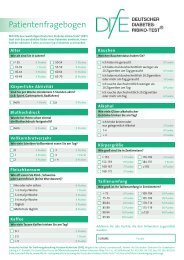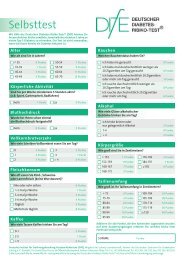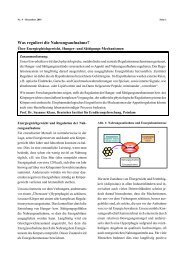12 �6 Dr. Behrens, research scientist of the department, analyzing tissue samples. Our main objective is the cloning of the complete set of human OR and the identification of their cognate odorants. To this end, we have first developed the HeLa/Olf cell system, a functional expression system partly based on transduction pathways of olfactory sensory neurons. This system measures receptor activation, upon exposure of the OR expressing cells to hundreds of odorants, by Ca 2+ imaging technology in a (semi-)high-throughput approach. So far, we have cloned 109 OR and tested 93 of them in the HeLa/Olf cell system against key food odorants. We identified 11 OR that responded selectively to (+)-carvone (dill) or (-)-carvone (peppermint), 1-octen-3-on (mushroom), citronellal, and citronellol (citrus). For all five human VN1R pheromone receptors, we identified aliphatic alcohols or aldehydes with chain lengths of 9–11 carbon atoms as specific agonists, some of which are key food odorants in orange juice or cooked rice, but also appear in human sweat (Fig. �5 ). These findings suggest a dual function of some volatiles as odorants and pheromones, presumably via activation of different receptor classes. All receptors that we identified detect odorants in a combinatorial way, i.e., one receptor is activated by several odorants and one odorant activates several receptors. �6 Dr. Behrens, wissenschaftlicher Mitarbeiter der Abteilung, bei der Analyse von Gewebeschnitten. auch Pheromon wirken können. Alle von uns identifizierten OR weisen eine kombinatorische Geruchsstofferkennung auf, dergestalt, dass ein Rezeptor durch mehrere Geruchsstoffe aktiviert wird, und umgekehrt ein Geruchsstoff mehrere Rezeptoren aktiviert. Technische Mitarbeiter/innen Elke Chudoba Stefanie Demgensky Ulrike Lerner Horst Maischack Ellen Schöley-Pohl Renate Schröder Stefanie Schultz
Ausgewählte Publikationen Selected Publications Originalarbeiten/original publications Behrens, M., Bartelt, J., Reichling, C., Winnig, M., Kuhn, C., Meyerhof, W.: Members of RTP and REEP gene families influence functional bitter taste receptor expression. J. Biol. Chem. 281, 20650– 20659 (2006). Bufe, B., Breslin, P.A.S., Kuhn, C., Reed, D.R., Tharp, C.D., Slack, J.P., Kim, U.-K., Drayna, D., Meyerhof W.: The molecular basis of individual differences in phenylthiocarbamide and propylthiouracil bitterness perception. Curr. Biol. 15, 322–327 (2005). Galindo-Cuspinera, V., Winnig, M., Bufe, B., Meyerhof, W., Breslin, P.A.S.: A TAS1R receptor-based explanation of sweet ‘water-taste’. Nature 441, 354–357 (2006). Hinrichs, A.L., Wang, J.C., Bufe, B., Kwon, J.M., Budde, J., Allen, R., Bertelsen, S., Evans, W., Dick, D., Rice, J., Foroud, T., Nurnberger, J., Tischfield, J.A., Kuperman, S., Crowe, R., Hesselbrock, V., Schuckit, M., Almasy, L., Porjesz, B., Edenberg, H.J., Begleiter, H., Meyerhof, W., Bierut, L.J., Goate, A.M.: Functional variant in a bittertaste receptor (hTAS2R16) influences risk for alcohol dependence. Am. J. Hum. Genet. 78, 103–111 (2006). Huber, T.B., Schermer, B., Müller, R.U., Höhne, M., Bartram, M., Calixto, A., Hagmann, H., Reinhardt, C., Koos, F., Kunzelmann, K., Shirokova, E., Krautwurst, D., Harteneck, C., Simons, M., Pavenstädt, H., Kerjaschki, D., Thiele, C., Walz, G., Chalfie, M., Benzing, T.: Podocin and MEC-2 bind cholesterol to regulate the activity of associated ion channels. Proc. Natl. Acad. Sci. U.S.A. 103, 17079– 17086 (2006). Jörs, S., Kazanski, V., Foik, A., Krautwurst, D., Harteneck, C.: Receptor-induced activation of Drosophila TRPgamma by polyunsaturated fatty acids. J. Biol. Chem. 281, 29693–29702 (2006). Shirokova, E., Schmiedeberg, K., Bedner, P., Niessen, H., Willecke, K., Raguse, J.-D., Meyerhof, W., Krautwurst, D.: Identification of specific ligands for orphan olfactory receptors. G protein-dependent agonism and antagonism of odorants. J. Biol. Chem. 280, 11807–11815 (2005). Soranzo, N., Bufe, B., Sabeti, P.C., Wilson, J.F., Weale, M.E., Marguerie, R., Meyerhof, W., Goldstein, D.B.: Positive selection on a high-sensitivity allele of the human bittertaste receptor TAS2R16. Curr. Biol. 15, 1257–1265 (2005). Winnig, M., Bufe, B. Meyerhof, W.: Valin 738 and lysine 735 in the fifth transmembrane domain of rTasIr3 mediate insensitivity towards lactisole of the rat sweet taste receptor. BMC Neuroscience 6, 22 (2005). Wooding, S., Bufe, B., Grassi, C., Howard, M.T., Stone, A.C., Vazquez, M., Dunn, D.M., Meyerhof, W., Weiss, R.B., Bamshad, M.J.: Independent evolution of bitter-taste sensitivity in humans and chimpanzees. Nature 440, 930–934 (2006). Übersichtsarbeiten/Reviews Behrens, M., Meyerhof, W.: Bitter taste receptors and human bitter taste perception. Cell. Mol. Life Sci. 63, 1501–1509 (2006). Meyerhof, W.: Elucidation of mammalian bitter taste. Rev. Physiol. Biochem. Pharmacol. 154, 37–72 (2005). Meyerhof, W.: Auf der Zunge zergehen lassen. Spiegel special Heft 5, 116–117 (2005). Meyerhof, W., Behrens, M. Feinschmecker gesucht! Die Molekularbiologie des Bittergeschmacks. labor&more Heft 4, 52–53 (2006). Buchbeiträge/Book Articles Bufe, B., Meyerhof, W.: Taste receptors and their variants. In: Brigelius-Flohé, R., Joost, H.G. (eds.) Nutritional genomics. Impact on health and disease. Wiley-VCH, Weinheim, 386–411 (2006). Drittmittelprojekte External Funding 13 Bioassay-unterstützte Identifizierung von Salzgeschmackverstärkern zur Entwicklung kochsalzarmer Lebensmittel Finanzierung: BMBF Laufzeit: 01.07.2006 – 30.06.2009 Cloning, expressing and deorphanizing olfactory receptors and study their ligandselectivity and specifity Finanzierung: Givaudan Schweiz Laufzeit: 01.05.2004 – 31.10.2007 Deorphanization of bitter taste receptors that modulate the bitter response in humans Finanzierung: Givaudan USA Laufzeit: 01.09.2003 – 31.08.2007 26. Blankenese Konferenz: „Energy Metabolism: From feeding to metabolic diseases“ Finanzierung: sonstige Drittmittel Laufzeit: 01.11.2005 – 31.12.2006 25. Blankenese Konferenz Signalling in Sensory Systems Finanzierung: DFG Laufzeit: 01.01.2005 – 31.12.2005 Funktionelle Identifizierung und Charakterisierung der humanen TAS2R Geschmacksrezeptoren Finanzierung: DFG Laufzeit: 01.06.2003 – 31.08.2006 Agonisten-Antagonistenstudie mit T1R2/ T1R3 Süßrezeptoren Finanzierung: Industrie Laufzeit: 01.06.2005 – 31.08.2005 Structure-activity relationship of Human Bitter Taste (VIGONI-Programm 2004: Projektbezogener Personenaustausch mit Italien) Finanzierung: DAAD Laufzeit: 01.01.2004 – 31.12.2005











